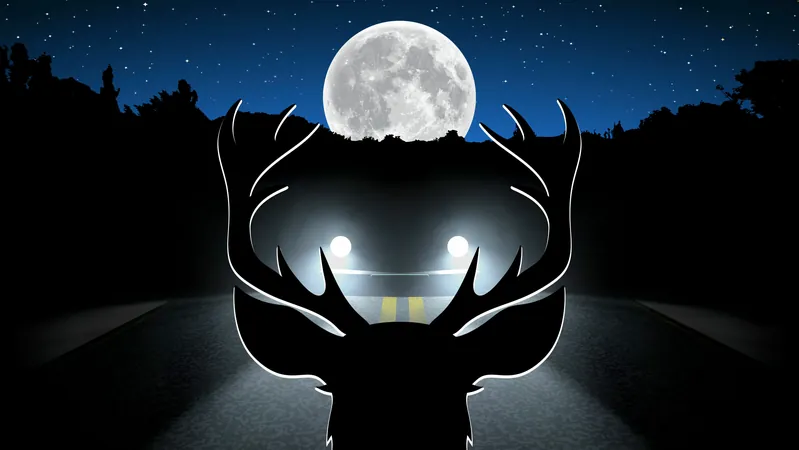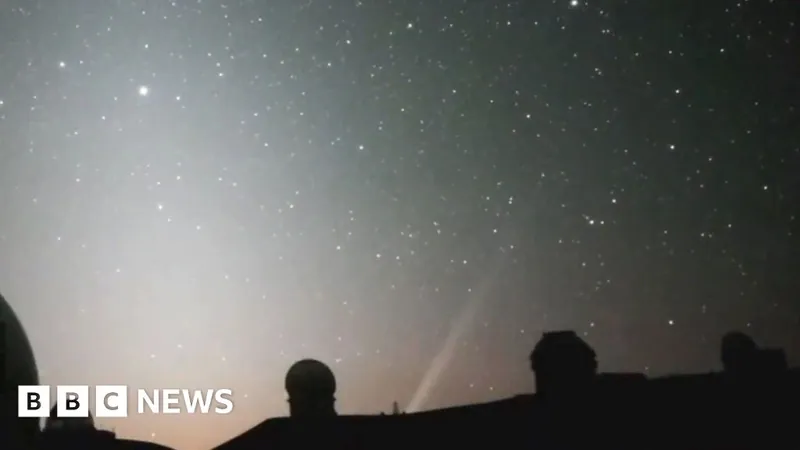
Shocking Findings: Full Moon Linked to 50% Surge in Wildlife Vehicle Collisions!
2024-10-12
Author: Sarah
Shocking Findings: Full Moon Linked to 50% Surge in Wildlife Vehicle Collisions!
Did you think the full moon only affected tides and folklore? Think again! New research from Texas A&M University reveals a staggering 45.8% rise in wildlife vehicle collisions during full moon nights, posing a serious threat not only to animals but also to drivers.
Led by former student Kentaro Iio and Dr. Dominique Lord from the Zachry Department of Civil and Environmental Engineering, the study analyzed a decade of collision data across Texas. The team meticulously compared collision rates on full moon nights to those on new moon nights, finding a striking pattern: while wildlife-related accidents increased dramatically, non-wildlife-related collisions remained steady.
"On nights with full moon illumination, wildlife activity might increase, leading to more collisions," said Iio. Their research highlights a critical need for enhanced driver awareness during these nights, especially considering the risks involved.
But why this startling increase? Experts suggest several factors may play a role, including driver fatigue and heightened wildlife movement under the moonlight. Iio and Lord urge transportation officials to consider these findings for potential policy changes and infrastructure enhancements, especially in rural areas where collisions are most prevalent.
Interestingly, their analysis also categorized collision data by region. The High Plains, South Texas, Central Texas, and Upper East regions reported escalations between 57.8% and a jaw-dropping 125% during the full moon! Conversely, the Texas capital area showed a negligible decrease in collision risk, although it wasn’t significant enough to draw firm conclusions.
"Evidently, rural areas are more prone to wildlife-vehicle accidents during a full moon compared to urban settings," explained Dr. Lord. This could be attributed to lower wildlife populations in urban centers and the overwhelming effect of artificial lights, which dampen the impact of lunar illumination.
While the study provides crucial insights, it also leaves open questions about the species involved in these collisions and variations in moonlight intensity. Future research, with more precise data on traffic volumes, varying illumination levels, and specific wildlife species, could enhance understanding of this phenomenon.
In conclusion, as we gaze at the beauty of the full moon, it’s essential to remember the hidden dangers it brings. The next time you hit the road on a full moon night, stay vigilant; this enchanting celestial event might be more hazardous than you think!

 Brasil (PT)
Brasil (PT)
 Canada (EN)
Canada (EN)
 Chile (ES)
Chile (ES)
 España (ES)
España (ES)
 France (FR)
France (FR)
 Hong Kong (EN)
Hong Kong (EN)
 Italia (IT)
Italia (IT)
 日本 (JA)
日本 (JA)
 Magyarország (HU)
Magyarország (HU)
 Norge (NO)
Norge (NO)
 Polska (PL)
Polska (PL)
 Schweiz (DE)
Schweiz (DE)
 Singapore (EN)
Singapore (EN)
 Sverige (SV)
Sverige (SV)
 Suomi (FI)
Suomi (FI)
 Türkiye (TR)
Türkiye (TR)